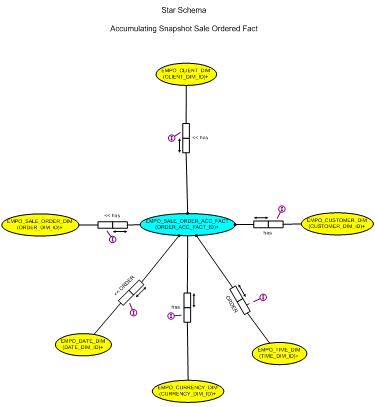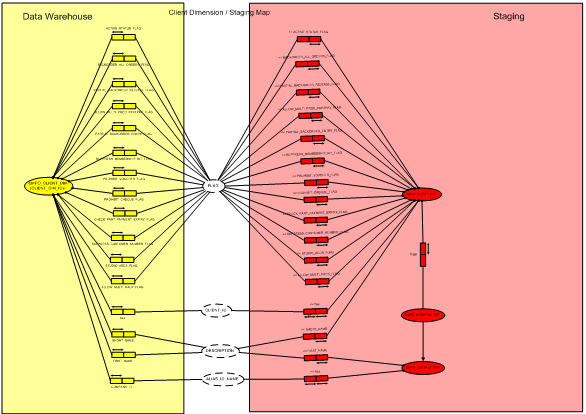Oryx will primarily use the Dimensional Data Modeling – Star Schema Design Pattern (refer to Ralph Kimball). This technique is widely adhered to in Data Marts but can be extended for Dimensional Enterprise Data Warehousing “EDW” (refer to Chris Adamson). We believe this design technique lends itself best to agile Data Warehousing development, by reducing the steps involved in getting useable data to the end user.
The preferred Conceptual Data Modeling methodology we use is based on Object Role Modeling developed by Australian academic, Dr Terry Halpin. ORM captures business rules and presents them to the end user in a more understandable format than standard Entity Relationship (E/R) modeling. ORM also provides more opportunity for 'object re-use'.

Figure 4. Example of Conceptual Data Model for a Dimensional Star Schema Model using ORM
We have also found it assists in the Data Mapping between the Source System Data (eg. OLTP) and EDW, because it works at a more granular level.

Figure 5. Example of Data Mapping using ORM
ORM can also produce Logical and Physical Data Models which are more used for implementation.

Figure 6. Example of E/R Star Schema






